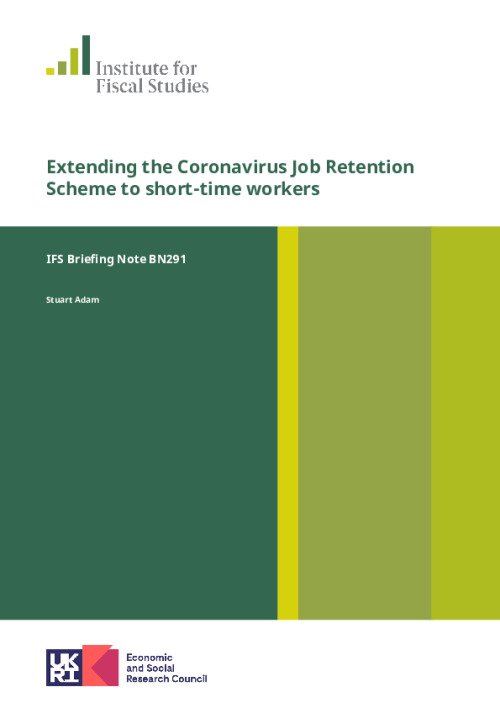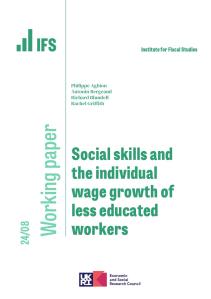The Coronavirus Job Retention Scheme (CJRS) covers 80% of employees’ usual salaries, up to a cap of £2,500 a month, while they are furloughed. From August it will also provide support for employees who return from furlough but work reduced hours. This Briefing Note considers the implications of that change and how it might work.
Key findings
- Extending the CJRS to those returning to short-time work will encourage employers to bring people back to work and support the incomes of those employees who do move back to short-time work. The proposed change is therefore a sensible one. It will not act uniformly to boost the economy, however: some people who would otherwise have returned to full-time work will instead prefer to return only part-time.
- Restricting support to those who were previously furloughed means that those who are already working reduced hours will continue to miss out on support. The advantage of the restriction is that it avoids an incentive for those currently working to reduce their hours, though in some cases obstructing such a reduction in hours might mean the job is lost altogether, or might make it harder for a partner or a colleague to return to their job.
- Since furloughed employees will continue to receive 80% of their usual earnings (up to a cap) when not working, it is inevitable that they will see relatively little additional financial reward for returning to work. On average between zero and full-time work, the hours they work must yield only a fifth of their usual hourly wage. Moreover, the net financial gain from working will be even smaller than this, as some of the additional earnings would be taken in tax and (where applicable) reduced means-tested benefits.
- Support provided through the CJRS should be reduced by whatever percentage of their usual hours employees work. There are many other ways that support could be withdrawn as people moved closer to full-time work, but this approach would mean that both employee and employer always saw some financial reward from an increase in hours of work (albeit very little, for the employee), and would avoid some clearly inequitable outcomes.
- But the need to calculate the amount of support based on hours of work, rather than earnings, creates a big practical challenge. The more hours worked, the lower government support must be, so that firms are not allowed to claim a large subsidy to cover the wages of employees who work almost full-time. But since hours of work are hard to measure and to monitor, the change will make the CJRS more complicated to operate and even more vulnerable to fraud.









